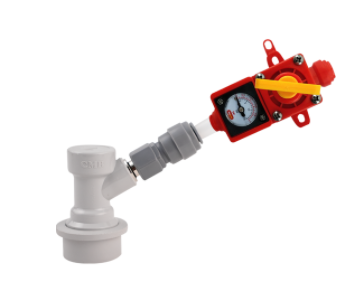So, I got an icemaster g20 a little while ago so that I can start doing some lagers "properly". Done a pils and a couple marzens with 34/70 at ale temps, but everything else has been an ale.
My normal process is to fement in primary till I hit FG, then I add sugar to the bottle or keg, rack the beer on it and wait till it is conditioned. For kegs, I just add about 3-4 oz sugar, and put a regulator on the gas post set at 12 psi. It seems to make plenty of extra pressure, and carbs up nicely. For bottles, I add sugar to each bottle individually (I use gunpowder measures. They seem to be more accurate and precise than measuring spoons) and fill right out of the fermenter. (I have spike flex fermenters)
Will these methods work for lagers?
The three I have done before I have kegged (as I do ales) and let them sit at RT to carbonate. Then they just kind of hang around awhile till I'm ready to tap. I do put them in the fridge a couple weeks before tapping.
My thoughts that were with a chiller, I could lager in the fermenter, then keg/bottle as I have always done, and I would still have a nice clean beer when it came time to pour. But, I read the other day, and it makes sense, that if you are adding priming sugar to a lager, it re-starts fermentation (obviously) but that after they have carbed up, they need to be re-lagered.
So, #1. Is this true? #2. If this is true, can I change my (specifically) bottling process so that I don't have to lager the bottles? (I know I can just carbonate kegs with CO2 rather than priming, it is just a hassle) I don't really have room to lager a bunch of batches of beer in bottles, and I do like bottles.
My normal process is to fement in primary till I hit FG, then I add sugar to the bottle or keg, rack the beer on it and wait till it is conditioned. For kegs, I just add about 3-4 oz sugar, and put a regulator on the gas post set at 12 psi. It seems to make plenty of extra pressure, and carbs up nicely. For bottles, I add sugar to each bottle individually (I use gunpowder measures. They seem to be more accurate and precise than measuring spoons) and fill right out of the fermenter. (I have spike flex fermenters)
Will these methods work for lagers?
The three I have done before I have kegged (as I do ales) and let them sit at RT to carbonate. Then they just kind of hang around awhile till I'm ready to tap. I do put them in the fridge a couple weeks before tapping.
My thoughts that were with a chiller, I could lager in the fermenter, then keg/bottle as I have always done, and I would still have a nice clean beer when it came time to pour. But, I read the other day, and it makes sense, that if you are adding priming sugar to a lager, it re-starts fermentation (obviously) but that after they have carbed up, they need to be re-lagered.
So, #1. Is this true? #2. If this is true, can I change my (specifically) bottling process so that I don't have to lager the bottles? (I know I can just carbonate kegs with CO2 rather than priming, it is just a hassle) I don't really have room to lager a bunch of batches of beer in bottles, and I do like bottles.



